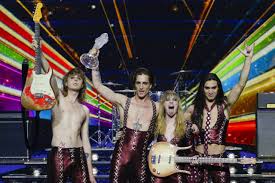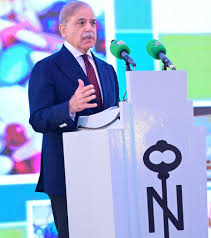Italy – Sing when you’re winning: Why Italians love the Sanremo song contest

Rome: With 75 years of history, Sanremo is the longest-running song contest ever and perhaps the most important in the world. Not only music, the festival also reflects Italian current affairs and represents a beloved collective cultural ritual.
The Sanremo Festival is this year celebrating its 75th edition – that’s five more than the Eurovision song contest, and reason enough to recognise its cultural importance.
The huge popularity the event enjoys today, along with the high quality of the show in comparison to Italy’s other entertainment offerings, has marked it as one of Europe’s biggest events. This is further proven by the contest’s consistent record-breaking financial results, entering the coffers of ‘Mamma Rai’ (the nickname used in Italy for state television) every year in mid-February.
Italian audiences, and increasingly foreign ones too, have learned to love Sanremo as one might love a fine wine. It allows people to unwind and taste something different year after year. In the right measures, it encourages communication, but it can also instigate reflection or give way to nostalgia. It is suitable for evenings in company, but also alone.
Above all, it improves over time, cultivating an increasingly unique sense of character as the years go by.
From the Casino to live TV
The history of the Italian music festival traces a trajectory of continuous growth and evolution, characterised by a perhaps unparalleled ability to adapt to changing times.
It’s this resilient quality that has allowed Sanremo to go through many carefree years, but also crises – as profound as they are necessary – to give new life to the event, and keep people interested as generations change.
Sanremo is a fixture that has accompanied the country since time immemorial, almost as long-lived as the history of the Republic, which began with the referendum of 2 June 1946.
It is difficult to tune in to RAI 1 and not feel deep affection for a country whose bones remain broken from 20 years of fascism, the catastrophe of the Second World War, but yet still chooses to look to a democratic future with a desperate desire for pop music.
By entering the homes of millions of people, the festival has taught families from north to south to sing together in Italian, strengthening the country’s cultural unification.
Thus Italy and Sanremo have grown up together.
In 1951, the first edition of the event took place in the ballroom of the Ligurian city’s casino. There was no live TV, RAI was not yet broadcasting continuously throughout the country. Instead, the contest was created to cheer up the dinners of gamblers.
It was only in 1955 that Sanremo appeared on state television and became an irrepressible success – so much so, that three years later it was made available on Eurovision, and from the 1960s was broadcast live on radio.
In 1977, the song contest finally left the casino and has been broadcast from the Ariston theatre ever since.
Things have not always been so bright for the festival.
It went through its deepest crisis in the 2000s, the stale format and outdated musical proposals not appealing to millennial audiences. Even though it has been streamed on Italian streaming service Raiplay since 2007, Sanremo was rejected for a long time by young people who found it boring.
In 2011, Italy returned to compete in the Eurovision song contest after a long absence, its previous participation dating back to 1997.
The chance to perform in front of an audience of hundreds of millions of Europeans played a key role in attracting record companies and established artists, who, for years, had preferred to snub the Sanremo stage.
The musical proposal has finally become contemporary, the revolutionised voting system rewarding emerging artists. The positive effects multiplied and Sanremo, surprisingly, emerged strengthened from its crisis years, with a new skin.
The dinner show for gamblers has now become a multimedia and interactive war machine, which appeals to Italians of all ages and dominates the ratings on TV and radio.
Sanremo’s content is an endless generator of social media interactions (300 million posts in the first two evenings of the current edition alone), not to mention that its hits clog and climb the charts worldwide across all music streaming platforms.
Victoria De Angelis of Måneskin performs with Duran Duran during the third evening of 75th edition of the Sanremo Italian Song Festival at the Ariston Theatre.
And then there is Fantasanremo, a fantasy game similar to the better-known fantasy football, in which spectators create teams of singers and earn points based on performance, ranking, outfits and goliardic actions performed on stage.
The game, which has become increasingly popular in recent years, has also been welcomed by competing artists, making the event more interactive and attractive even to non-music fans.
It has also been a launchpad for the success of many Italian musicians – above all Måneskin, the band from Rome who, after their success on the Ariston stage and their triumph at Eurovision, earned worldwide fame.
While the Festival is undoubtedly the most historically popular event in Italy, this does not mean that everyone loves it. On the contrary, there is no shortage of detractors. But its successes are too obvious to be denied, and the numbers it is able to generate shield it from any kind of attack: Sanremo is an indispensable event, for Rai and for Italy.
With state TV going through a difficult period due to a series of flops and questionable editorial choices, Sanremo remains a certainty that Rai cannot afford to give up.
The 66% average share of the last edition, a target that seems within reach for the current one, is a result that guaranteed advertising revenue of 60 million euros in 2024 and as much as 67 million in 2025.
Rai never provides detailed information on the production costs of its programmes, but if the rough estimates for the 75th edition speak of around 20 million overall, it’s easy to sum up its value.
History, numbers and successes are there for all to see, yet they are not enough to explain what happens one week a year at Sanremo and the sentimental bond that unites Italians with the festival.
The reality is that Sanremo tells current events in a straightforward manner, and is also a useful guide to recognise progress, achievements or steps backwards in Italian society.
Just think of 2015, when the Austrian singer known by her stage name Conchita Wurst, winner of the 2014 Eurovision song contest, was introduced to the Ariston audience as ‘Tom’. At the end of her performance she also wasn’t honoured with a bouquet of flowers, in defiance of Sanremo protocol.
A disrespect and lack of tact, to put it mildly, that would be intolerable in today’s editions, where thanks to the sensitivity of a younger and more attentive audience, inclusiveness is now at home.
From a simple celebration of Italian song, Sanremo has become a window on society and also a mirror to observe it.
Glued to the television, connected to social networking sites and in constant communication through the most disparate Whatsapp groups, the festival represents a collective escape and ritual for millions of people. For a week, they can talk without filters about their tastes, what they are passionate about, and what they love and hate.
Like a giant group therapy session, the Sanremo audience chooses, confronts, criticises. And it is free to indulge in one of the country’s favourite activities: causing controversy, about everything. Division is the germ of politics, which pervades everything in Italy.
Even so, Sanremo always reminds us of a fundamental trait of our national identity. Despite its millennial history, Italy is one of the youngest countries on the continent, a nation that is anything but homogeneous, instead ‘united in diversity’.
It’s an Italian history, but also a European one.





